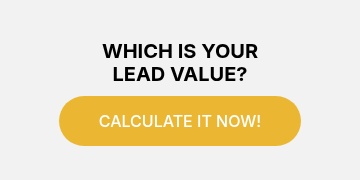Running a small business these days is no joke. You’re wearing half a dozen hats, juggling endless to-do lists, and, if we’re honest, sometimes just hoping nothing falls through the cracks. That’s where HubSpot for small business comes into play. It’s designed to take a heap of your marketing, sales, and customer service headaches and shrink them down to size without needing several different platforms.
Jumping into a new system can seem overwhelming, especially when you’re already busy. Maybe you’ve heard about HubSpot but wonder if it’s worth it for your shop, agency, or local business. Is it just for big brands, or does it really offer tools designed for business owners like you?
In this guide, I’ll break down what HubSpot is, the features that matter most for small business, and how it stacks up against other options. We’ll dive deep on costs, setup tips, real-life success stories, and integrations that make life easier. Plus, I’ll throw in some expert advice from past projects and mistakes we’ve made along the way. Ready for some clarity and practical steps? Let’s get into it.
What Is HubSpot? Overview for Small Business Owners
At its core, HubSpot is an all-in-one customer relationship management (CRM) platform. That might sound fancy, but what it really means is you get one place to organize your contacts, sales leads, emails, social posts, support tickets and more. It covers what you need to connect with customers and keep your business humming.
HubSpot has built its reputation on making marketing, sales, and customer service tools more manageable, especially for those without huge budgets. Their platform fits the pace and budget of small business owners who can’t afford to spend months playing around with a tool before seeing any value.
HubSpot’s Core Tools and Features
Here are the key Hubspot features for SMBs:
- CRM: Manage all your contacts, communications, and deals in one dashboard.
- Marketing Automation: Send targeted emails, capture leads with forms, and set up workflows that follow up with prospects so you don’t have to do it manually.
- Sales Tools: Track deals, schedule appointments, and get notifications when your leads open emails.
- Customer Service Features: Centralized inboxes, ticket pipelines, and surveys help your team respond faster and keep clients happy.
Benefits of an Integrated Platform for Small Teams
Remember those days of copying and pasting data from one app to another? HubSpot connects all your tools and customer info in one place. Your marketing, sales, and service projects (even if that’s all just you) see the same info and can work together without confusion or missing info.
HubSpot vs. Other CRM Solutions for Small Business
Wondering how HubSpot stacks up? Against rivals like Salesforce, Zoho, or Mailchimp, HubSpot often wins for small businesses thanks to its easy setup, clean user interface, and truly free plan. You don’t need to be a tech wizard to get going, and you won’t find yourself nickel-and-dimed just to try things out. That’s huge when every dollar counts.

Key Benefits of HubSpot for Small Business
Let’s talk about why HubSpot matters when you’re hustling as a small business.
Streamlined Marketing and Sales Processes
With HubSpot, you get automation that actually makes your day-to-day easier:
- Send emails automatically based on customer actions.
- Route, score, and assign leads to your team so your hottest prospects don't get missed or neglected.
- Visual sales pipelines show exactly where deals stand, which means clearer priorities and fewer missed opportunities.
PIC Tip: Build Smart Lists Early. Smart Lists in HubSpot let you automatically segment your contacts based on behavior, lifecycle stage, or custom criteria. Setting these up early gives you instant visibility into your pipeline, enables personalized marketing, and lays the groundwork for scalable automation.
Improved Customer Experience
A personalized touch goes a long way. With all contact info in one central place, you can send messages that make sense to each customer based on their history, not just scattershot blasts. Plus, the shared inboxes mean you always have the full story when someone reaches out.
Scalability and Flexibility for Growing Businesses
Maybe you’ve only got a few team members now, but what about next year? HubSpot allows you to add users or expand features without starting from scratch. Start for free, then add more advanced tools only when you need them.
How to Get Started with HubSpot in 3 Steps
Thinking about diving in? Here’s a three-step overview to get you rolling with HubSpot for small business.
 Step 1: Choosing the Right HubSpot Plan
Step 1: Choosing the Right HubSpot Plan
- Free: Includes CRM, basic marketing, and sales tools. Great for testing the waters or solo operators.
- Paid Tiers: Unlock advanced automation, reporting, and support. You can choose from “Hubs” focused on marketing, sales, or service—or bundle them together.
PIC Tip: Start with what you’ll actually use. In our experience, it’s always easier to start with less and add more if you need it. This gives you a chance to learn what you actually use. If you feel like you’re missing something, you can always add on later.
 Step 2: Setting Up Your HubSpot Account
Step 2: Setting Up Your HubSpot Account
- Contact Import: Bring in contacts from Excel, Gmail, or wherever they live now.
- Connect Email: Sync up your team’s inboxes for smooth communication tracking.
- Set Up Pipelines: Customize your sales and support stages to fit the way your business works.
- Automations: Set up simple workflows first, such as follow-up email triggers or assigning leads based on criteria.
PIC Tip: Before customizing HubSpot, define your core business objectives. Whether you're focused on lead generation, pipeline visibility, or customer retention, tailoring your HubSpot setup to align with your priorities will save time and ensure meaningful ROI.
 Step 3: Onboarding Your Team
Step 3: Onboarding Your Team
- Training: Use HubSpot Academy’s free tutorials and short videos.
- Team Buy-In: Show your team how HubSpot will save them time (not just add another login).
- Set Expectations: Agree on basics first like entering leads consistently. Add new workflows slowly.
HubSpot Integrations & Customization for Small Business
No business runs on HubSpot alone. Integration is baked into the platform.
Popular Integrations for Small Business Needs
- E-commerce: Connect with Shopify to sync customer and order data.
- Accounting: Hook up QuickBooks to keep financial info in the loop.
- Productivity Suites: Use Google Workspace or Microsoft 365 for calendar and email integration.
- Automation: Use Zapier to link HubSpot to almost any other app.
Customization Options and App Marketplace
You’re not stuck with out-of-the-box workflows. HubSpot allows you to customize your environment:
- Personalize dashboards so everyone sees relevant info immediately.
- Build custom sales pipelines and deal properties.
- Browse the HubSpot App Marketplace for add-ons, from SMS marketing to survey tools.
PIC Tip: Keep It Simple. Then Optimize. You don’t need every feature on Day One. Start with clean contact data, core forms, and a few key workflows. As your team gets comfortable, you can layer on additional tools like lead scoring, advanced reporting, or custom objects without overwhelming your system or your staff.
Real-World Examples: Small Businesses Succeeding with HubSpot
It’s one thing to hear the pitch, another to see it in the wild.
Let’s talk about real results from businesses like yours.
Case Study: How Kappler Streamlined Sales and Marketing Data with a Custom Sage-HubSpot Integration"
Kappler needed to integrate Sage X3 (sales data) with HubSpot (marketing CRM) to better track lead-to-sale performance, improve reporting, and reduce manual data entry.
- Improved sales tracking in HubSpot with minimal duplicates.
- Created a unique company ID system.
- Improved data accuracy, operational efficiency, and ROI tracking.
- Foundation set for future enhancements (e.g., SKUs, fabrics, contact URLs).
Lessons Learned and Tips from Small Business Users
- Don’t try to do everything at once. Start simple, then add features as you go.
- Consistency is key. Put in the monthly effort to keep data and process tidy.
- Ask for help. HubSpot support and user communities have saved me (and many others!) more than once.
Frequently Asked Questions (FAQs)
Is HubSpot really free for small businesses?
Yes. HubSpot’s free plan is robust for basic CRM, email marketing, and scheduling. If you need advanced automation or reporting, you can upgrade later.
How long does it take to implement HubSpot?
For most small businesses, you’ll get the basics up and running in a few days. Full adoption by a small team usually takes a few weeks, depending on how much you want to automate.
Can HubSpot work with my existing tools?
Most likely. HubSpot integrates with popular apps like Slack, Gmail, QuickBooks, Shopify, and more. If you use something unique, check the App Marketplace or Zapier.
Is HubSpot suitable for very small teams or solo entrepreneurs?
Yes. Many solo consultants and two-person shops use HubSpot to stay organized without extra hires.
How much does HubSpot cost for a small business?
- Free Plan:
Includes essential CRM tools and is free. - Starter Plan:
Starts at $20 per seat and offers enhanced features like email marketing, sales automation, and customer service tools. - Professional and Enterprise Plans:
Higher-tier plans with advanced functionalities range from $150 to $1,800+.
Does HubSpot integrate with QuickBooks?
Yes, HubSpot integrates with QuickBooks Online. This integration allows for syncing contacts, products, and invoices between the two platforms.
What is the difference between HubSpot free and Starter?
HubSpot Free offers basic CRM functionalities, including contact management, email marketing with HubSpot branding, and limited reporting dashboards.
HubSpot Starter builds upon the Free plan by removing HubSpot branding, providing higher usage limits, enhanced automation capabilities, and access to additional tools.
Why We Recommend (and use) HubSpot for Small Businesses
HubSpot for small businesses brings all your marketing, sales, and support tools together into one platform. This makes life a lot easier for most small business owners and teams.
If you have more questions or need further assistance, we offer fully managed HubSpot Services and we also offer HubSpot Training.



















